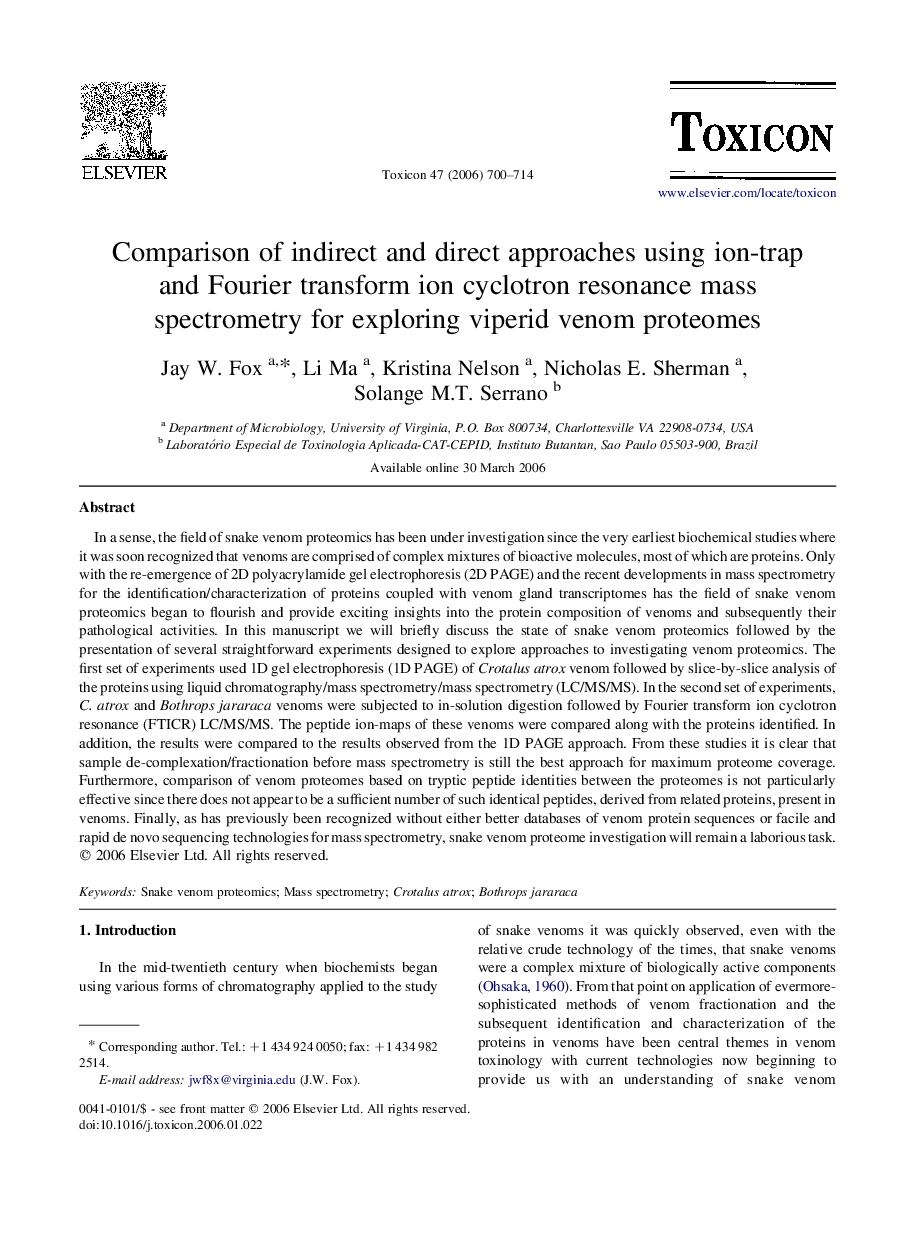| کد مقاله | کد نشریه | سال انتشار | مقاله انگلیسی | نسخه تمام متن |
|---|---|---|---|---|
| 2066295 | 1076988 | 2006 | 15 صفحه PDF | دانلود رایگان |

In a sense, the field of snake venom proteomics has been under investigation since the very earliest biochemical studies where it was soon recognized that venoms are comprised of complex mixtures of bioactive molecules, most of which are proteins. Only with the re-emergence of 2D polyacrylamide gel electrophoresis (2D PAGE) and the recent developments in mass spectrometry for the identification/characterization of proteins coupled with venom gland transcriptomes has the field of snake venom proteomics began to flourish and provide exciting insights into the protein composition of venoms and subsequently their pathological activities. In this manuscript we will briefly discuss the state of snake venom proteomics followed by the presentation of several straightforward experiments designed to explore approaches to investigating venom proteomics. The first set of experiments used 1D gel electrophoresis (1D PAGE) of Crotalus atrox venom followed by slice-by-slice analysis of the proteins using liquid chromatography/mass spectrometry/mass spectrometry (LC/MS/MS). In the second set of experiments, C. atrox and Bothrops jararaca venoms were subjected to in-solution digestion followed by Fourier transform ion cyclotron resonance (FTICR) LC/MS/MS. The peptide ion-maps of these venoms were compared along with the proteins identified. In addition, the results were compared to the results observed from the 1D PAGE approach. From these studies it is clear that sample de-complexation/fractionation before mass spectrometry is still the best approach for maximum proteome coverage. Furthermore, comparison of venom proteomes based on tryptic peptide identities between the proteomes is not particularly effective since there does not appear to be a sufficient number of such identical peptides, derived from related proteins, present in venoms. Finally, as has previously been recognized without either better databases of venom protein sequences or facile and rapid de novo sequencing technologies for mass spectrometry, snake venom proteome investigation will remain a laborious task.
Journal: Toxicon - Volume 47, Issue 6, May 2006, Pages 700–714